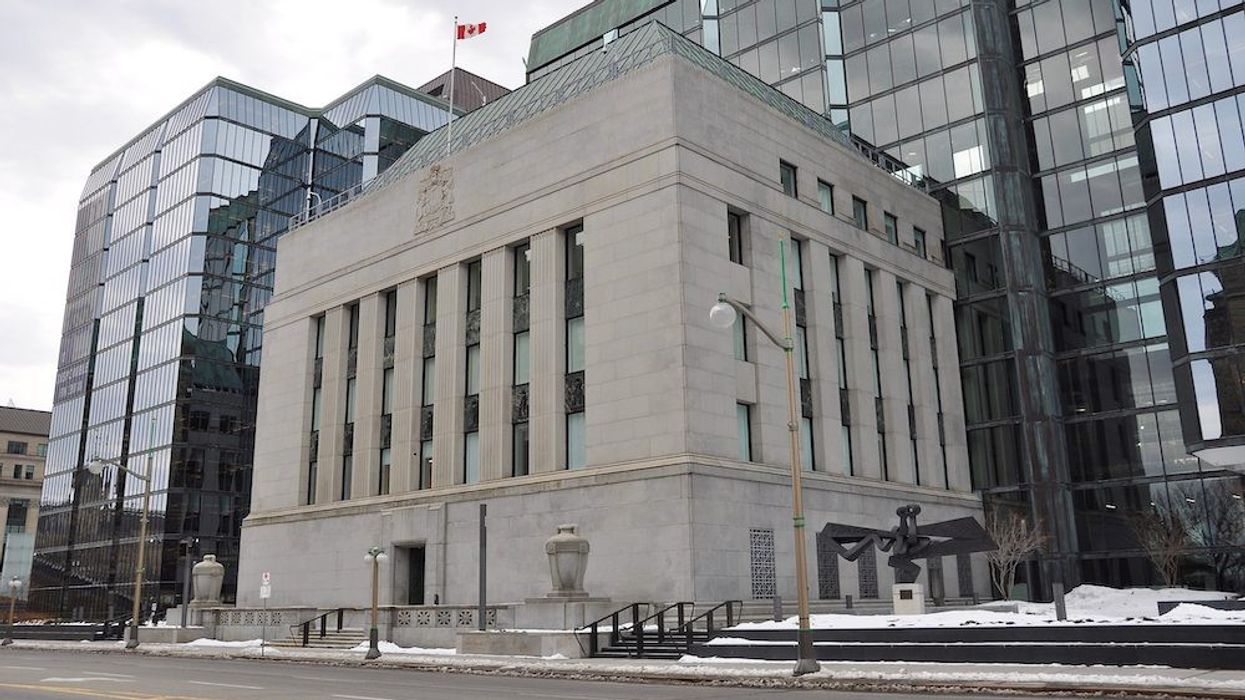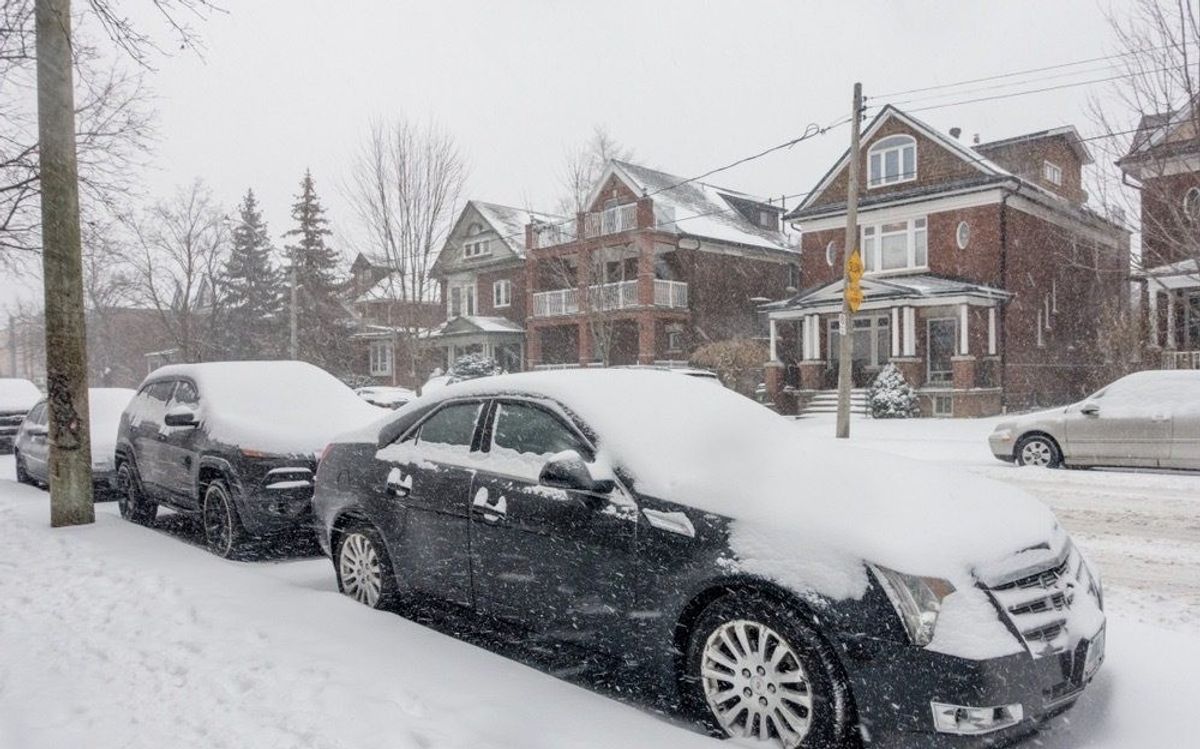And up we go again. The Bank of Canada increased its trend-setting Overnight Lending rate by 50 basis points (bps) to 3.75% today, in their ongoing efforts to combat inflation. It also announced it will continue with its policy of quantitative tightening, removing excess bond holdings from its balance sheet.
The Bank noted that while its efforts to reign inflation are starting to take hold -- CPI has declined from 8.1% to 6.9%, mainly due to softer gas prices -- the measure remains far too high for comfort.
“Price pressures remain broadly based, with two-thirds of CPI components increasing more than 5% over the past year,” states their release. “The Bank’s preferred measures of core inflation are not yet showing meaningful evidence that underlying price pressures are easing. Near-term inflation expectations remain high, increasing the risk that elevated inflation becomes entrenched.”
The good news: the Bank expects inflation to retreat to 3% by the end of 2023, and then to its ideal target of 2% by 2024, as price pressures from global supply disruptions fade.
For the time being, however, the stage is set for additional rate hikes, with at least one more to come in December, and into next year.
“Given elevated inflation and inflation expectations, as well as ongoing demand pressures in the economy, the Governing Council expects that the policy interest rate will need to rise further,” the Bank states. “Future rate increases will be influenced by our assessments of how tighter monetary policy is working to slow demand, how supply challenges are resolving, and how inflation and inflation expectations are responding… We are resolute in our commitment to restore price stability for Canadians and will continue to take action as required to achieve the 2% inflation target.”
The Bank also touched on growing fears of recession, saying the economy continues to operate in excess demand and that labour markets remain tight. That supply and demand pressures persist continues to put upward pressure on inflation, while businesses continue to grapple with the challenges of staffing and inventory as the economy fully reopens.
Overall, the Bank projects GDP growth will slow from 3.25% this year to just under 1% next year and 2% in 2024.
“The effects of recent policy rate increases by the Bank are becoming evident in interest-sensitive areas of the economy: housing activity has retreated sharply, and spending by households and businesses is softening,” the Bank states. Also, the slowdown in international demand is beginning to weigh on exports. Economic growth is expected to stall through the end of this year and the first half of next year as the effects of higher interest rates spread through the economy.”
Today’s rate increase was widely anticipated by economists and market analysts, with calls ranging from a minimum 50-bps increase, to 0.75%. A poll conducted by Finder.com of economists found they were unanimous in predicting today’s hike, with 88% expecting another rate increase in the BoC’s December meeting.
“The BoC has been clear about its intention to hike in October, and might have one more small increase in December, but we are close to levels needed to slow growth and inflation in 2023,” wrote Avery Shenfeld, Chief Economist at CIBC, who called for a 50-bps increase today. He says that as the central bank nears its forecasted terminal rate, it should heed the pressure its hiking cycle has put on the economy, and chill the pace.
"As rates move up, the Bank [of Canada] should slow the pace of increases to allow the economy to show its response to earlier hikes, and thereby reduce the risk of going too far."
Mortgage Rates to Rise
As a result, lenders’ Prime will rise from 5.45% to 5.95%, which will push five-year variable rates offered by consumer lenders into the 5.7% range from the 5.25% offered today by most of the big six.
Fixed mortgage rates, while not directly impacted by the Bank of Canada, will still respond to its influence; the bond market has been volatile in the face of negative economic news, with five-year government yields spiking to a 15-year high this week, at 3.7%. That has pushed fixed-rate offerings from banks to the 5.4% range, with today’s increase to only fuel that growth further.
Borrowers are Feeling the Brunt
Today’s increase marks the sixth consecutive increase for the BoC’s rate, reflecting a 3.5% uptick since March. That’s the steepest upward trajectory seen since the 1990s, and has put considerable pressure on borrowers, particularly those who got variable-rate mortgages during the pandemic, when rates were kept at a record-low baseline of 0.25%.
That borrowing costs have spiked so dramatically in such a short period means debt servicing costs for this group have increased by hundreds of dollars per month, putting more borrowers at risk of hitting their trigger rate -- when their monthly payments cover interest only, and no longer contribute to their principal debt -- or the more severe trigger point, when rising interest payments wipe out their equity. The latter requires borrowers to take action, such as increasing their monthly payments, make a lump sum payment, or extend their amortization period.
According to the Finder poll, 62% of economist respondents believe recent homeowners with high loan-to-value mortgages could soon be in a negative equity position.
Another recent poll, conducted by debt tracking company MNP Ltd., found that a record number of Canadians are worried about their financial standing as a result of rising interest rates with 59% -- or six in 10 -- expressing concern. That’s the highest reading since the survey began tracking data in 2017, says MNP.
That the BoC has taken such an aggressive approach to monetary policy has been a point of frustration among consumers and politicians, due to the financial hardship it’s causing.
Federal NDP Leader Jagmeet Singh is the latest to push back, imploring Prime Minister Justin Trudeau in a letter to scale back the pace of hikes. He went further in a following CTV question period, saying there’s “absolutely no merit to their [the BoC’s] approach.”
Real Estate to Further Chill
This most recent rate hike is also sure to leave its mark on the real estate market, as cash-strapped Canadians are far less likely to make a home purchase.
Home sales and prices have softened considerably across the nation since March; the September data from the Canadian Real Estate Association showed home prices fell nearly 7% annually in September, with sales down -32.2% year over year. From the market peak recorded in February, the average home price has plunged by 21.5%, reflecting a dollar loss of $176,241.
The next Bank of Canada interest rate announcement is set for Wednesday, December 7.





















